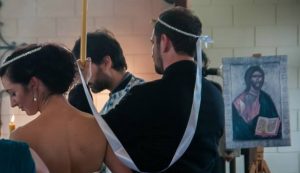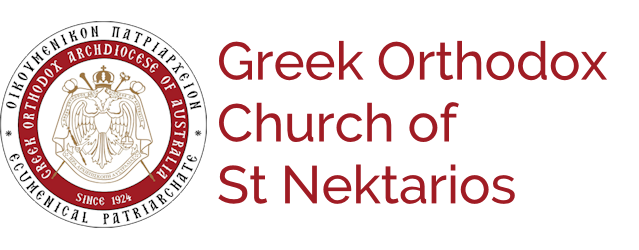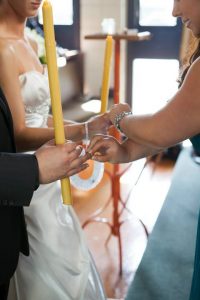The Trinitarian mystery of unity in diversity applied not only to the doctrine of the Church, but to the doctrine of marriage. Humans are made in the image of the Trinity, and except in special cases they are not intended by God to live alone, but in a family. And just as God blessed the first family, commanding Adam and Eve to be fruitful and multiply, so the Church today gives it’s blessing to the union of man and woman.
Marriage is not only a state of nature but a state of grace. Married life, no less than the life of a monk, is a special vocation, enquiring a particular gift of charisma from the Holy Spirit; and this gift if conferred in the sacrament of Holy Matrimony.
The Marriage service is divided into two parts, formally held separately but now celebrated in immediate succession: the preliminary Office of Betrothal, and the Office of Crowning, which constitutes the sacrament proper.
At the Betrothal service the chief ceremony is the blessing of and the exchange of the rings; this is an outward token that the two partners join marriage of their own free will and consent, for without free consent on both sides their can be no sacrament of Christian marriage.
The second part of the service culminates in the ceremony of coronation: on the heads of the bridegroom and bride the priest places crowns. This, the outward and visible sign of sacrament, signifies a special grace which a couple receive from the Holy Spirit, before they set out to found a new family or domestic Church. The crowns are crowns of joy, but they are also crowns of martyrdom, since every true marriage involves self-sacrifice on both sides. At the end of the service the newly married couple drink from the same cup of wine, which recalls the miracle at the marriage feast of Cana in Galilee: this common cup is a symbol of the fact that henceforward they will share a common life with one another.

Bibliography: Kallistos,. 1993. The Orthodox Church. 1st ed. London, England: Penguin Books.


Write a comment: